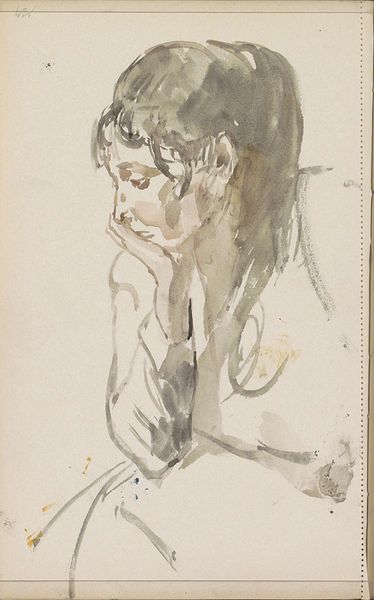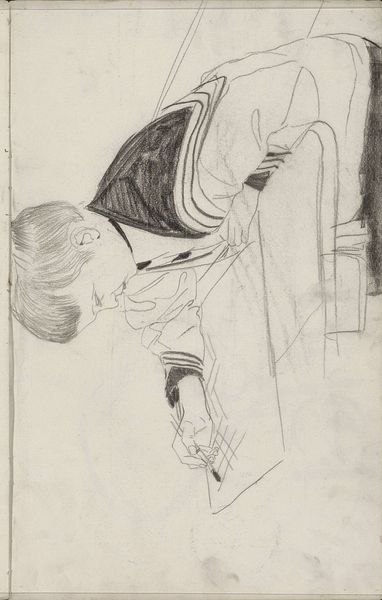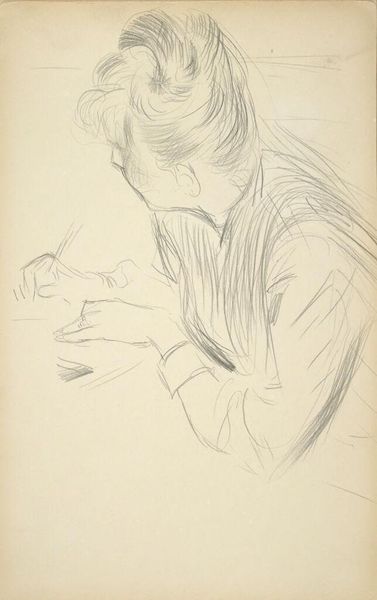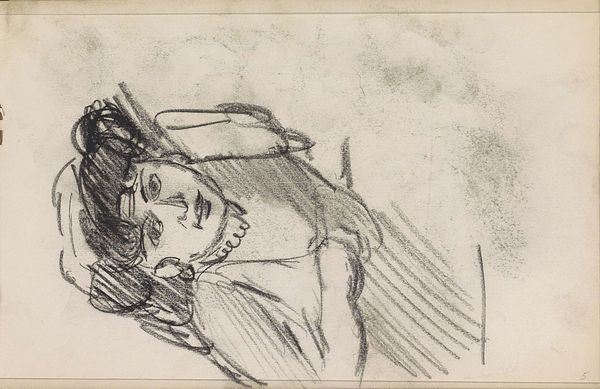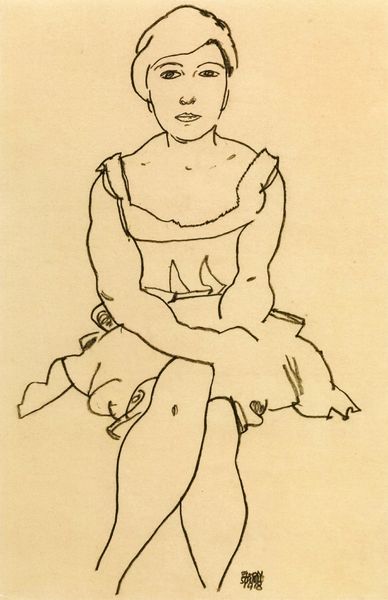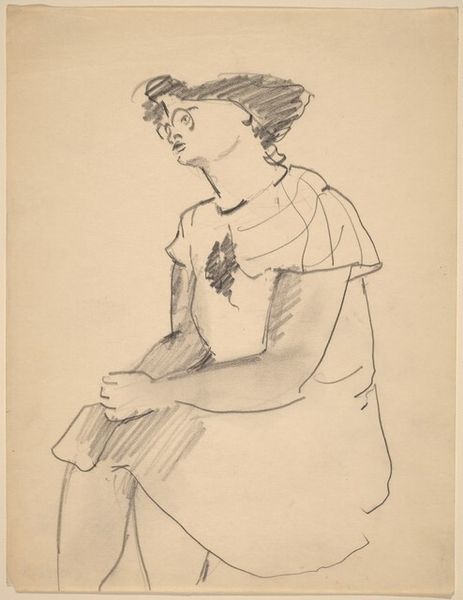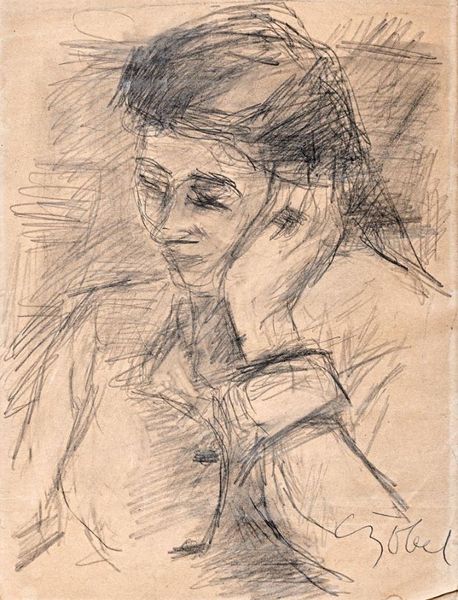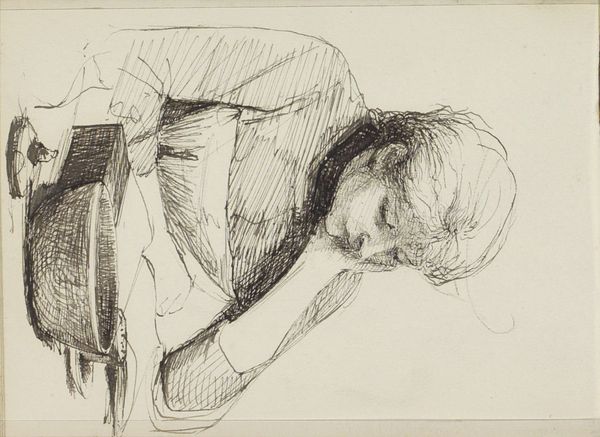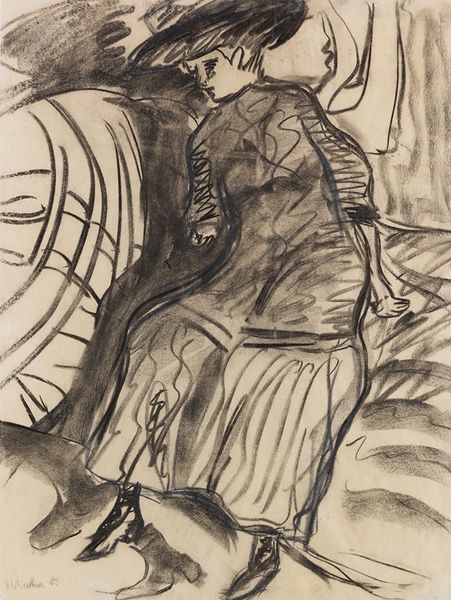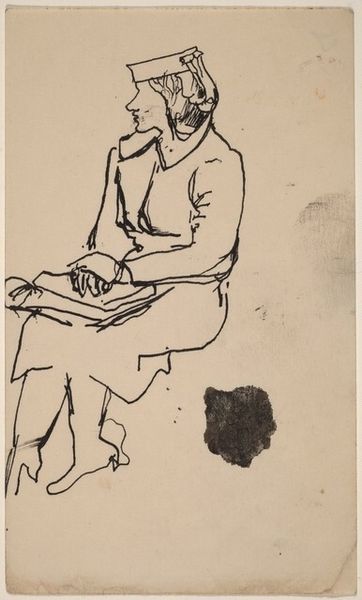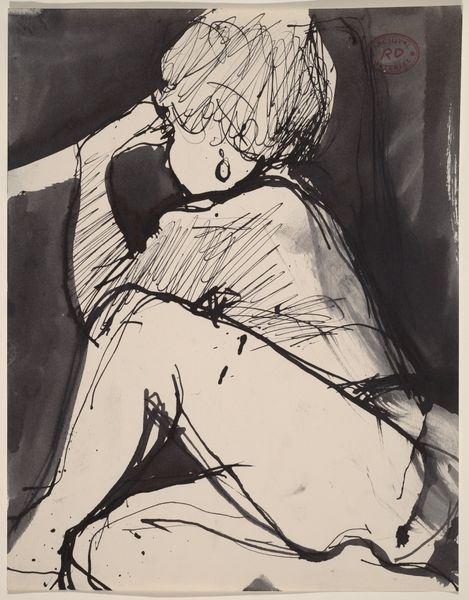
drawing, pencil
#
portrait
#
drawing
#
pencil sketch
#
figuration
#
pencil drawing
#
sketch
#
pencil
#
expressionism
Copyright: Public domain
Editor: We're looking at Egon Schiele's "The Artist's Sister-in-Law in a Striped Dress," a pencil drawing from 1917, currently housed in the Albertina in Vienna. The figure seems introspective, almost burdened. What stands out to you? Curator: The starkness of the drawing, the visible anxiety in her posture—it’s classic Schiele. But what's fascinating is its social context. Consider 1917 Vienna: a city grappling with war, social upheaval, and a distinct sense of fin-de-siècle anxiety. Does the drawing capture that historical unease for you? Editor: Absolutely. Her downcast eyes and clasped hands suggest a deep worry. Was portraiture of family members common during this time, or was Schiele using his sister-in-law to convey broader societal anxieties? Curator: Both. While artists often depicted their families, Schiele's portraits often transcend mere likeness. They become studies of psychological states, commenting on the individual's role within a society in crisis. What do you make of the striped dress? Does that uniform-like pattern carry meaning? Editor: That's an interesting point! It’s so repetitive. Almost as if she is caged? Could it represent the societal constraints placed on women at the time? Curator: Precisely! These repetitive elements can be interpreted as visual metaphors for social structures, highlighting the restricted roles and expectations imposed upon individuals, especially women, within early 20th-century Austrian society. Consider the public reception of his works, then and now. Has it changed, do you think? Editor: I imagine that its raw emotionality might have shocked viewers then, while today, it is appreciated for its honesty. This look at art and culture really contextualized it. Curator: Agreed. It is through the lens of history that we understand not only the artwork but also ourselves.
Comments
No comments
Be the first to comment and join the conversation on the ultimate creative platform.
